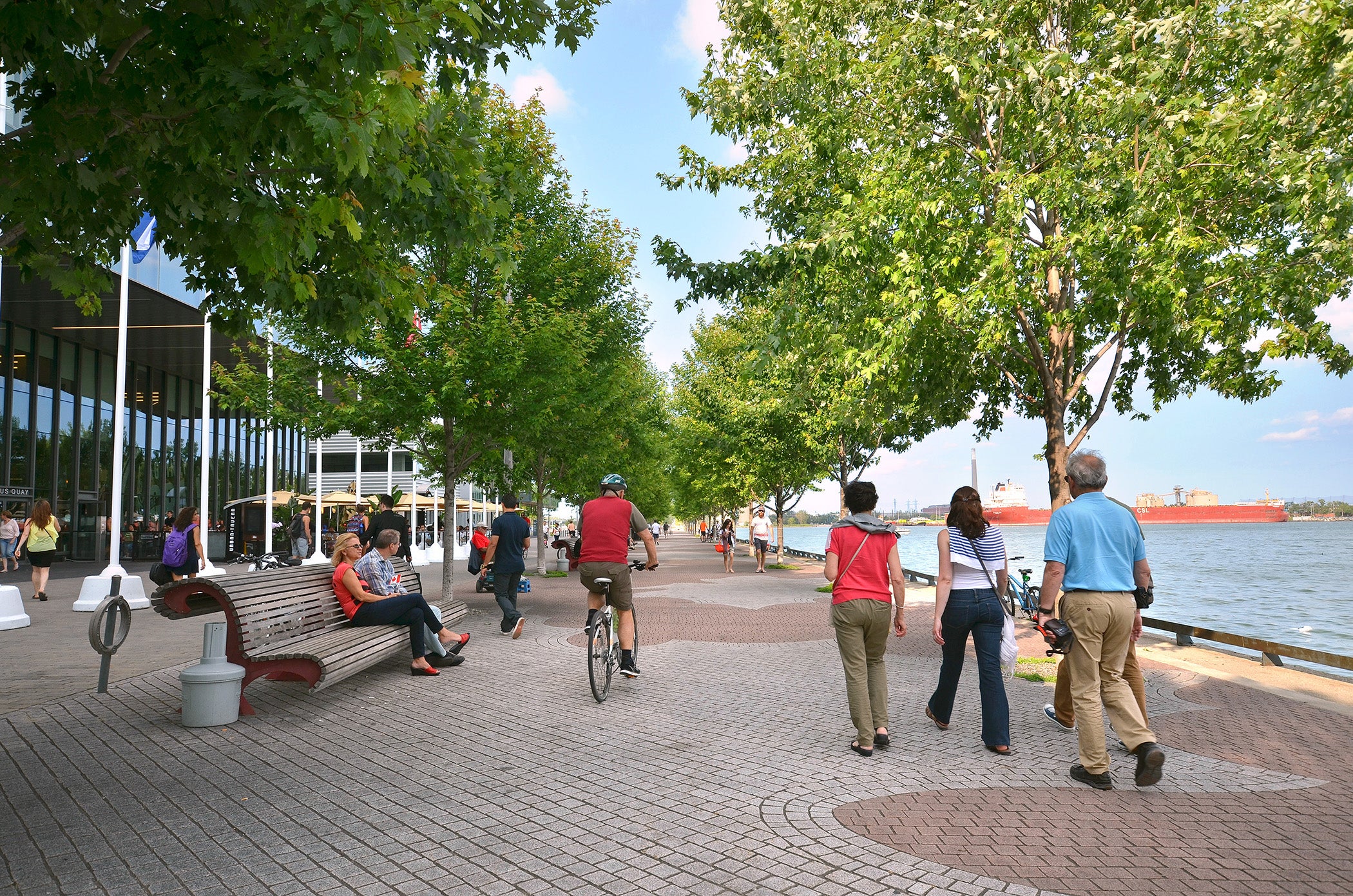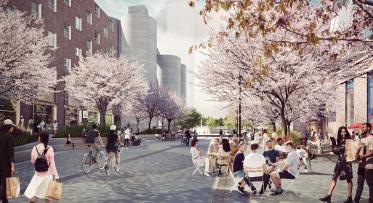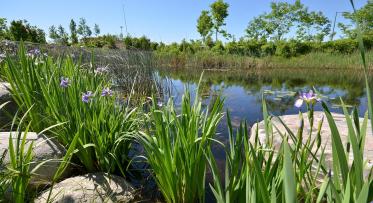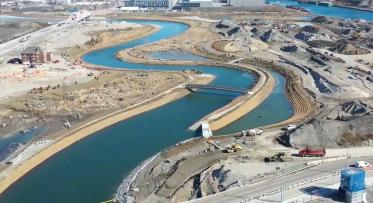CSRSR Profile Series: Public Realm
The water’s edge promenade in East Bayfront features a shaded canopy for pedestrians and cyclists to enjoy right next to Lake Ontario.
POSTED: JANAUARY 23, 2019 I PARKS AND PUBLIC SPACES, DESIGN, SUSTAINABILITY
By: EMMA LOEWEN
Back in November 2018, we released our 2017 Corporate Social Responsibility and Sustainability Report (CSRSR), highlighting the progress we’ve made in achieving broad economic, social and environmental goals since our last report in 2015. At that time, we also published a blog post that explained Waterfront Toronto’s reporting practices and highlighted some of the key takeaways from the report.
Now, we’d like to dive even deeper into the CSRSR with a five-part series called the CSRSR Profile Series where we will be celebrating some of the key accomplishments that have come out of the report. Over the coming weeks, we will be profiling different themes to give you a sense of the topics that are covered in the full report. If you’re interested in viewing the entire report, you can find it on our website here.
Otherwise, let’s dive into some of our public realm achievements!
Waterfront Toronto has a long history of designing and building beautiful, accessible, and sustainable public spaces. This not only promotes a variety of social goods such as community-building, inclusivity and physical activity, but it also has a positive impact on the environment.
For instance, the trees we plant in our parks and along promenades serve an important function in their local communities, such as providing shade for residents, reducing the heat island effect that impacts many urban areas including downtown Toronto, and absorbing carbon dioxide from the atmosphere. In fact, the trees in Sherbourne Common and Sugar Beach alone remove the carbon equivalent of driving 5,000 kilometres.
As part of our Corporate Social Responsibility and Sustainability reporting, we’ve also been measuring the growth rate of the trees at Sugar Beach and Sherbourne Common since they were planted in 2010. These studies show that the average diameter has grown over 17 centimetres.
 This graphic from the CSRSR highlights the growing diameter of trees in public spaces like Sugar Beach and Sherbourne Common.
This graphic from the CSRSR highlights the growing diameter of trees in public spaces like Sugar Beach and Sherbourne Common.
We can attribute a lot of the success of this growth to the use of soil cell technology. Typically, street trees do not grow an extensive amount due to a lack of space for their roots to grow and soil compaction that happens over time. On walkways near Sugar Beach and Sherbourne Common (as well as many other areas around the waterfront), we are able to create a much more luscious tree canopy by placing a series of rigid boxes called soil cells that support the soil so that it won’t compact under the weight of city pavement. This provides lots of space for tree roots to spread and thrive, keeping them healthy as they grow to full maturity. When revitalization is complete, all waterfront trees that don’t live in parks—about 16,800 of them—will have soil cell technology.
The photos below demonstrate the canopy growth of the trees alongside Sugar Beach between 2013 (first image below) and this past summer (bottom image):


Next up in our CSRSR Profile Series, we will be exploring Waterfront Toronto’s history of establishing precedent-setting green building standards for buildings along the waterfront. Stay tuned...




